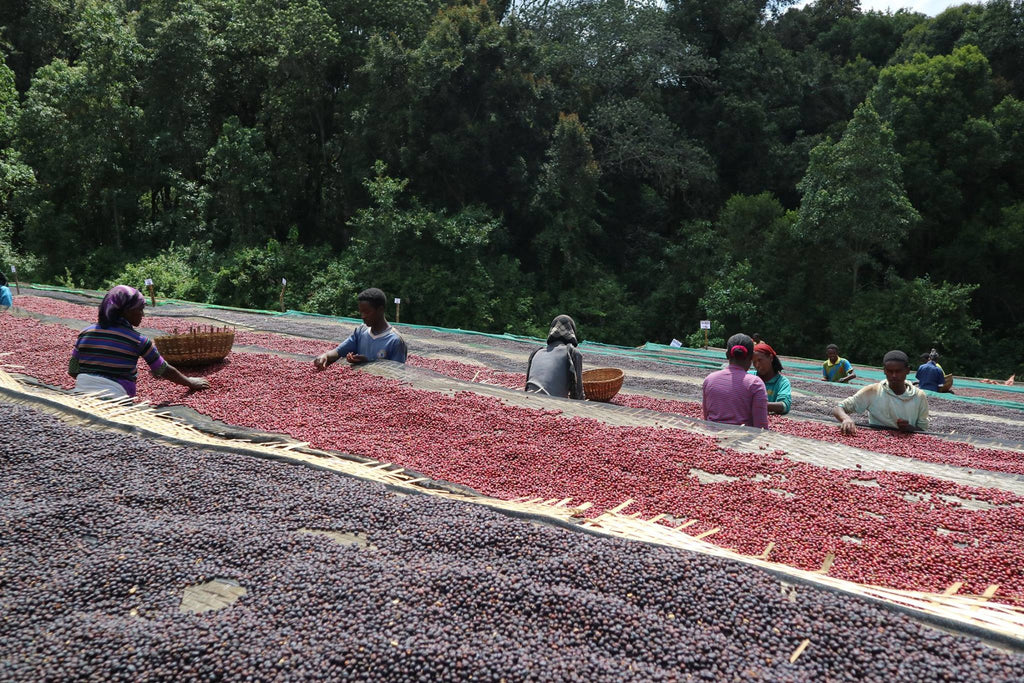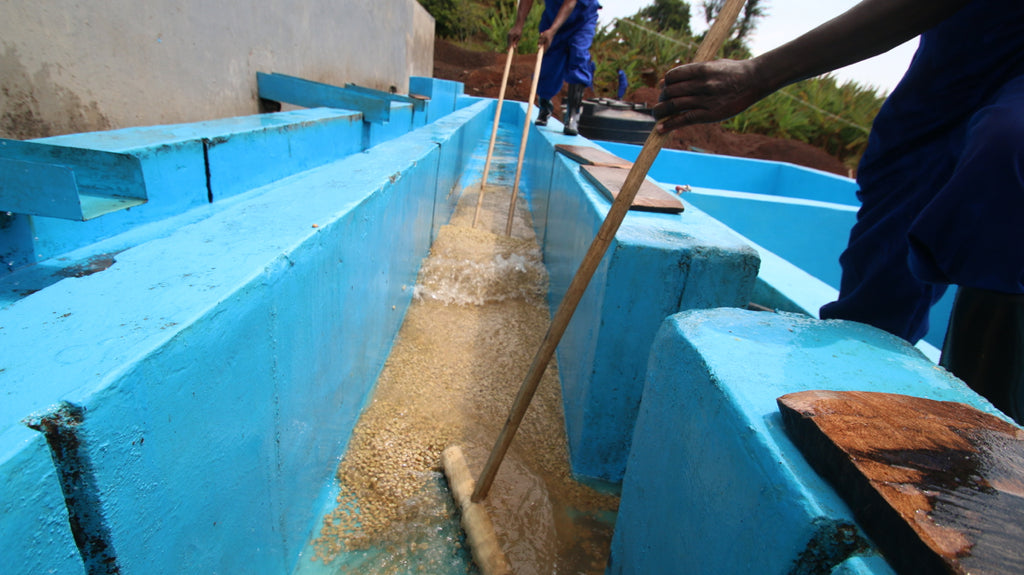It's all part of the process...
It’s always incredible to think that our morning cup of coffee started with a cherry on a tree. This tree needed to be in a nice warm climate, without too many sudden changes in temperature, and no frost to speak of. Our coffee tree would also need plenty of seasonal rain. When all of these things come together this tree will eventually produce cherries that enclose two flat seeds – the ‘beans’ ! The flavour we experience from these coffee beans partly depends on where and how this tree grows, but there are many other influences too …
When you start to think about the different flavours that can be extracted (and the different factors that have influenced these flavours) you start to realise how complex the whole journey from seed to cup is! Origin, varietal, processing, roast, brew method – all of these things play a part in the flavour of our coffee, and each one has its own range of peculiarities and complexities. For example, within the origin country of a coffee, there can be great diversity of flavour; influenced by cultivation techniques, altitude and terroir. Different varietals will also produce varying levels of acidity, sweetness and complexity of flavour.

This post is about different ways of processing coffee, and how they can influence flavour.
What happens at the country of origin is the biggest influence on the flavour we experience from our coffee. One of the most important influences on flavour is the way a coffee tree’s cherry is processed after it has been picked. Once the cherry has been picked, the seed needs to be removed from the fruit; it is the way that this happens which is referred to as the processing method.
Within countries, and even within individual farms, several processes can be used. Producers around the world are experimenting with new processing techniques and styles everyday with some exciting results. There are generally three main methods of processing: Natural, Honey and Washed.
The natural process
Natural coffees (also referred to as sun-dried or dry-processed coffees) are dried in the fruit that surrounded them when they grew. With the natural process, after the cherry has been picked it is laid out on patios or drying tables. Once the cherry has dried the seeds (i.e. coffee beans) are removed. Coffee produced by this processing method is often heavy in body, sweet, smooth, and complex. ‘Naturals’ are often very intense in flavour.

There are significant challenges to producing top quality coffees using the natural processing method. The sugar and moisture can attract Insects, fungus and mould and the weather can also be problematic – if there is any rainfall during the drying phase this can be detrimental to the speed and consistency of drying. If the cherry is wet for too long, there is a danger that the fruit will begin to ferment, over fermentation can easily destroy the entire crop. Natural processing can present the most risk for farmers in terms of quality and taste.
A significant improvement has seen the introduction of raised beds for the drying coffee cherries. The raised-bed method involves more effort as the cherries are turned by hand for the first 72 hours, providing more air circulation around the drying fruit and reducing the risk of mould.
With the risks involved and the potential to yield an unreliable, low-quality product – why risk using the natural process? Countries like Ethiopia, Brazil, Yemen, and Indonesia make naturals because they do not have the water resources of those countries that primarily export washed coffees. In fact, in some areas of Ethiopia, it is actually illegal to produce coffee using the washed method.
Despite the risks, natural coffees are arguably the most distinct. The fruit drying on the beans changes the final flavour profile: comparatively sweeter with a heavier body, less flavour clarity, but with greater complexity.
The washed process

Washed or wet processing involves more equipment, but can produce the most consistent results. After they have been harvested the coffee cherries are brought to a wet processing mill where they will be soaked in water. Defective cherries are screened out, as unripe or overly matured cherries float and are prevented from getting to the next stage of the process.
The ripe cherries will then be put into a de-pulping machine, this machine separates the skin and fruit from the beans. A sticky and sugary layer, known as the mucilage, remains. The beans then
travel into tanks that will be filled with water, they will sit in these ‘fermentation tanks’ for between 12 and 24 hours, depending on the country of origin. This fermentation allows the mucilage to be easily removed from the bean. Once fermentation is complete, the beans, that are still in their parchment, are then dried on patios or drying tables.

Washed coffees are usually lighter in body than naturals. They tend to be lower in sweetness and this method preserves more acidity, with cleaner more defined flavour profiles. For the farmer the benefits of wet processing are clear: there is significantly less risk, and a more consistent product.
The honey process
Also referred to as the pulped natural or semi-washed process, this processing method can be described as a mixture between the two previously described methods. As with the washed process, a pulping machine removes the cherry from the seed.
What makes the Honey Process so different is at this stage in the process the mucilage is left on. The mucilage is a thin gooey layer that surrounds the parchment, essentially acting as a protective layer to the bean. It is also very sweet in flavour and this is what makes the defining characteristic of ‘honey’ process coffee. Once dry, the mucilage gives the coffee a heightened sweetness and more body in the cup.
The cherry can be pulped either by creating friction to remove the skin with a de-pulper, or by using a mechanised demucilager, where the amount of mucilage removed can be adjusted. This ability to control the extent to which the mucilage is removed has lead to four ‘versions’ of the honey method: Red Honey, Yellow Honey, White Honey and Black Honey.

Essentially Red Honey is where all of the mucilage is left on and the others are varying degrees of mucilage removal – the more mucilage you remove, the closer you get to the characteristics of a washed coffee, the more you leave on, the closer it gets to a natural.
These honey processed coffee’s sit between the Washed and Natural methods. However, this depends on the farm and the way the processing has been done, so some will have a distinctive Natural-like flavour and others will be indistinguishable from the Washed method. The honey process can give farmers’ more control over the flavour profile of their coffees which is contributing to it’s increased popularity among farmers that are quality driven.





Leave a comment
This site is protected by hCaptcha and the hCaptcha Privacy Policy and Terms of Service apply.